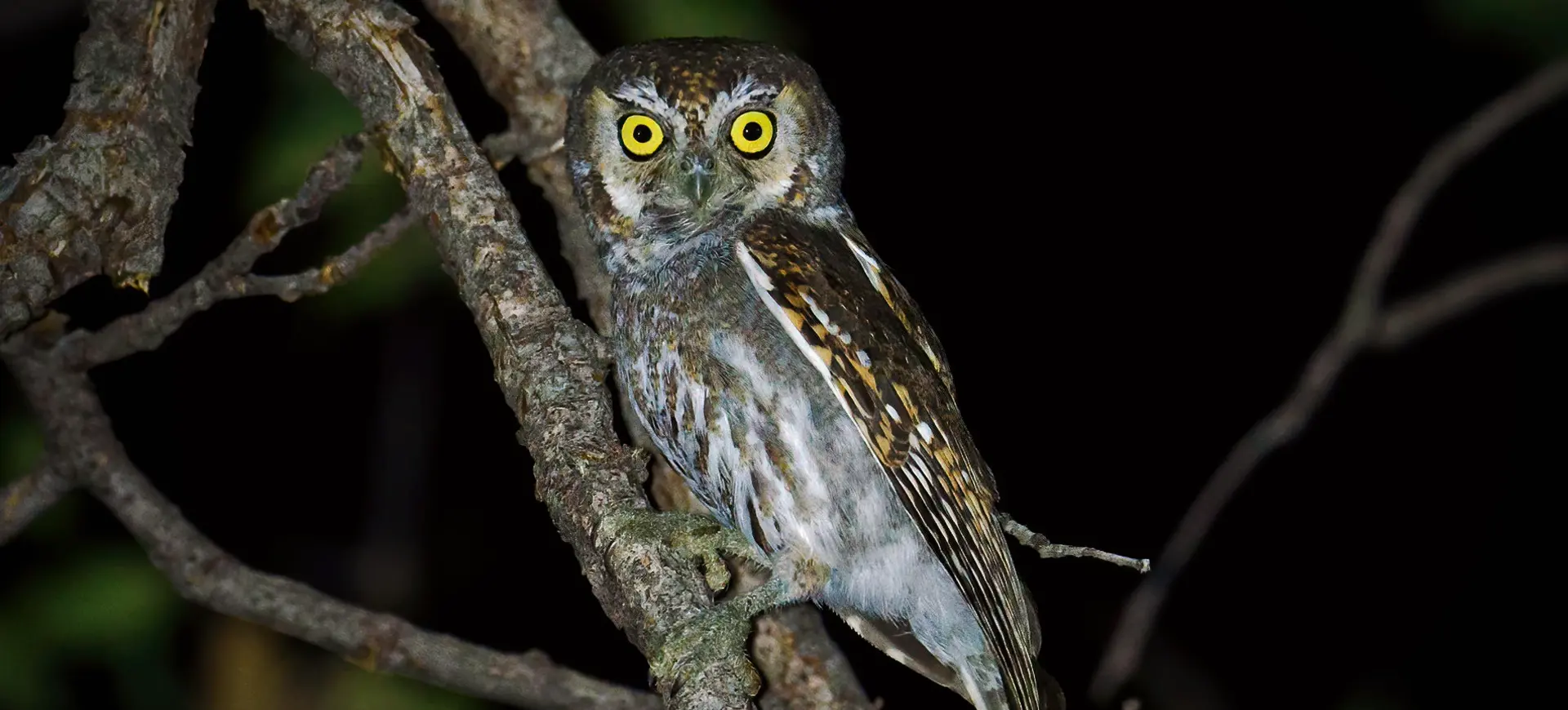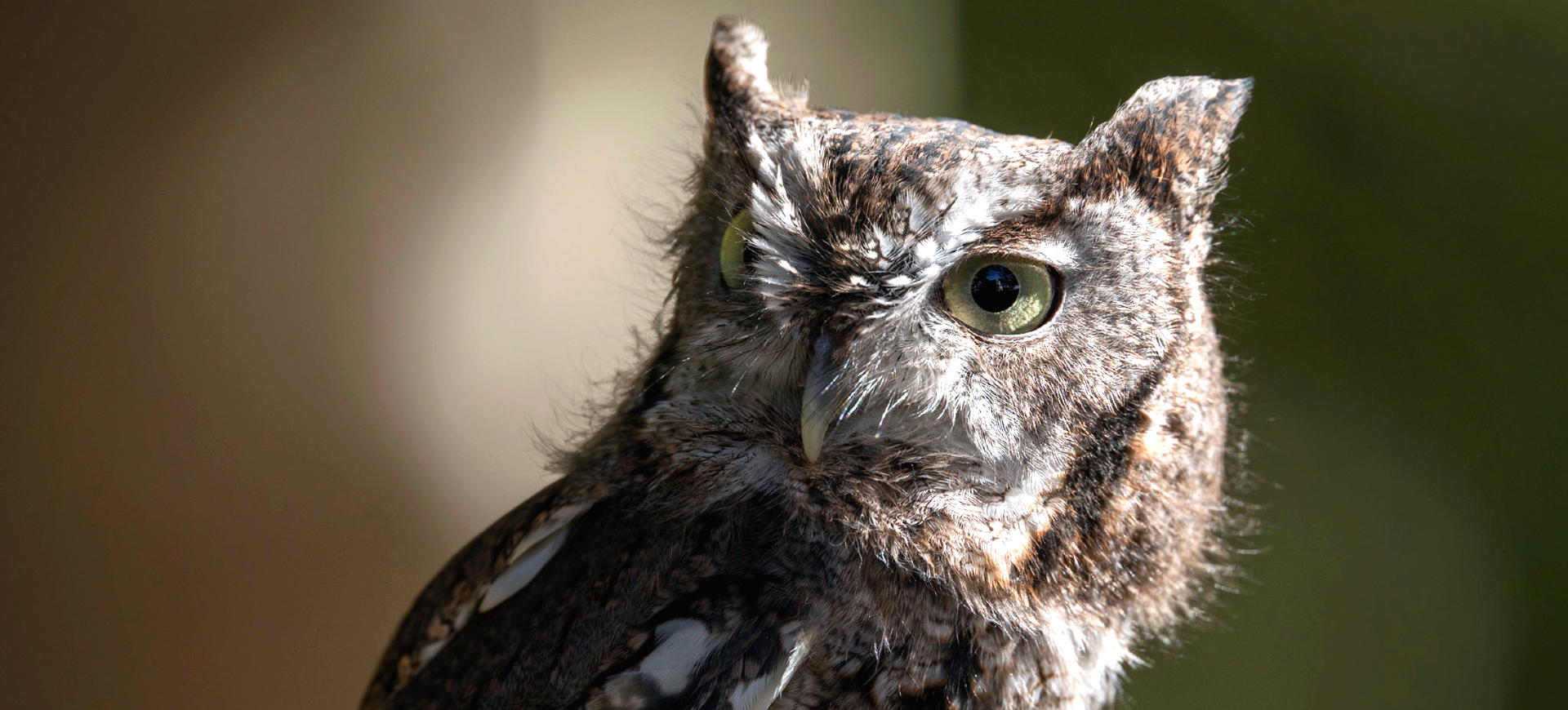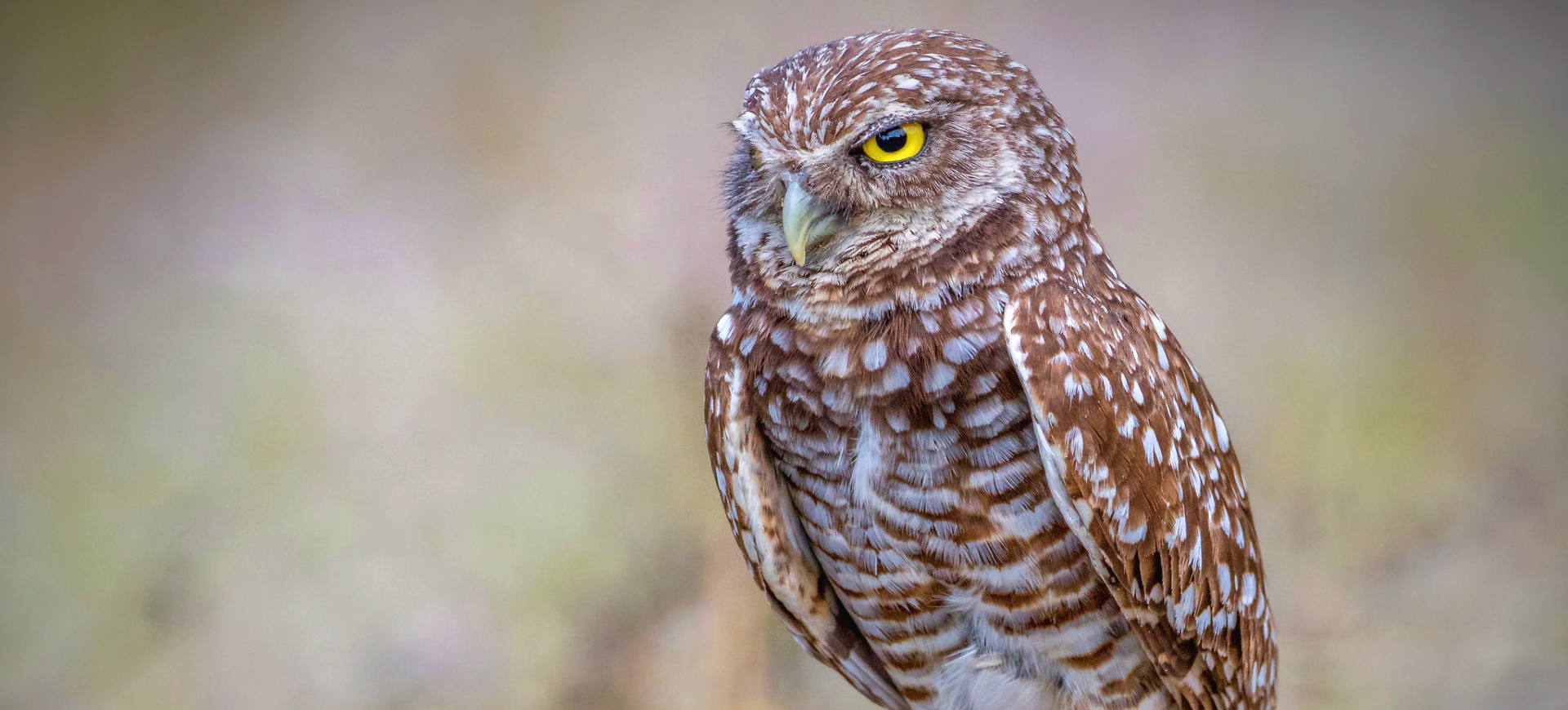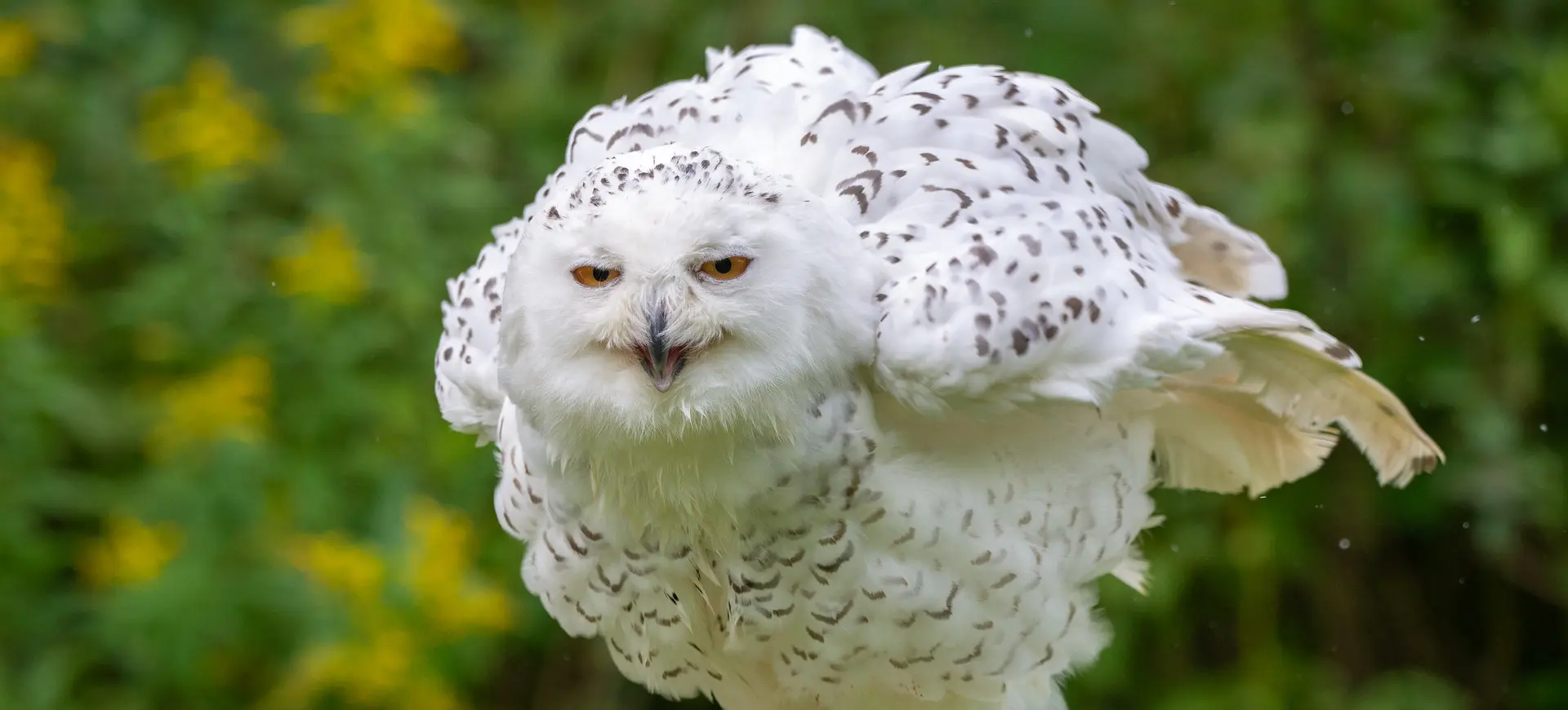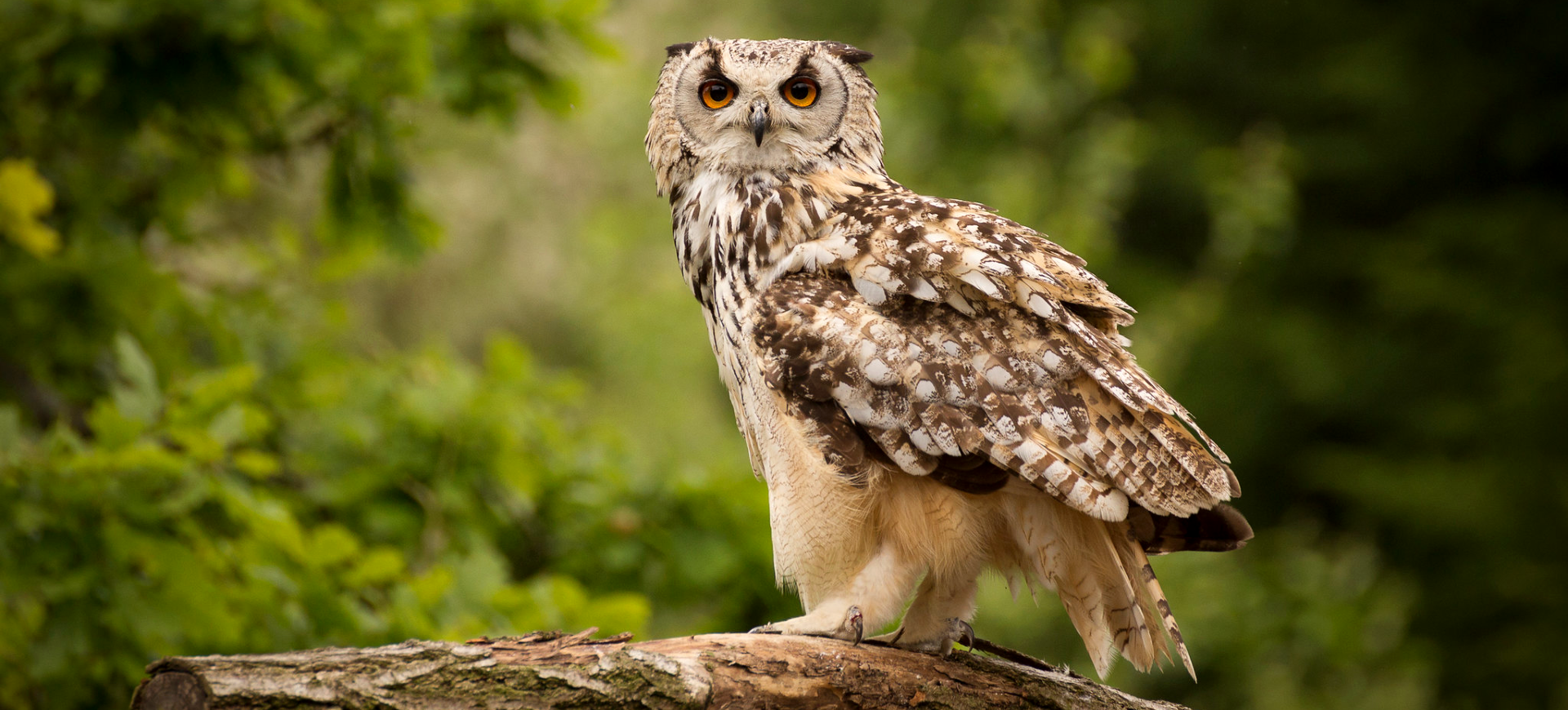Overview
The Great Horned Owl, Bubo virginianus, is a large and powerful bird of prey, known for its distinctive tufts of feathers resembling horns, which contribute to its name. These owls possess a striking appearance, with mottled gray-brown feathers, a barred chest, and fierce yellow eyes, making them one of the most recognizable owls in North America. They have a broad range and adaptability, inhabiting forests, deserts, and urban areas across the Americas. Great Horned Owls are apex predators, capable of hunting a wide variety of prey, including mammals, birds, and reptiles, demonstrating their prowess through silent flight and deadly precision.
These owls are primarily nocturnal, with most of their hunting done at night, using their exceptional hearing and sight to locate prey in complete darkness. Their flight is nearly silent due to the specialized feather structure, allowing them to stealthily approach their prey. Great Horned Owls are solitary and territorial animals, with territories established and defended through hooting duets between mates. They are known for their deep, resonating call, often used in film and television to evoke a nocturnal atmosphere.
Great Horned Owls play a significant role in their ecosystems as top predators, helping to control populations of rodents and other small to medium-sized animals. They have few natural predators, with most threats coming from human activities such as habitat destruction, collisions with vehicles, and secondary poisoning from rodenticides. Despite these challenges, their wide distribution and generalist habits have allowed them to maintain stable populations across their range.
Taxonomy
Kingdom
Phylum
Class
Order
Family
Genus
Species
Type
Physical Description:
The Great Horned Owl is notable for its large size, with adults typically ranging from 18 to 25 inches long and boasting a wingspan of 40 to 57 inches. They weigh between 2 to 5.5 pounds, with females generally larger and heavier than males. Their most distinctive features are the large, ear-like feather tufts on their head, which are not actual ears but make the owl appear larger to predators and rivals. The plumage of the Great Horned Owl is adapted for camouflage, with a mottled pattern that blends seamlessly into their environment, whether in tree bark or rocky outcrops.
Their facial disc is framed with darker feathers, enhancing their deep-set yellow eyes, crucial for their excellent night vision. The strong, curved beak of the Great Horned Owl is hidden beneath feathers, used for tearing apart prey. Their paws are extremely powerful, exerting great force to kill and carry prey, including animals as large as skunks and hares. This physical prowess, with their silent flight and camouflage, makes them formidable predators.

Lifespan: Wild: ~15 years || Captivity: ~30 years

Weight: Male: 2-4 lbs (0.9-1.8 kg) || Female: 2.7-5.5 lbs (1.2-2.5 kg)

Length: 43-64 cm

Height: Male: 18-22 inches (45-56 cm) || Female: 20-25 inches (51-64 cm)

Wingspan: Male & Female: 40-57 inches (101-145 cm)

Top Speed: 40 mph (64 km/h)
Characteristic:
Native Habitat:
Great Horned Owls have one of the most extensive ranges of any North American bird of prey, occupying a diverse array of habitats, including forests, swamps, deserts, tundra edges, tropical rainforests, and urban environments. Their versatile diet facilitates their adaptability to different habitats and their ability to nest in various structures, from tree cavities and stumps to rocky outcrops and even human-made structures. They prefer areas that offer ample perching and nesting sites, as well as abundant prey.
The ability of Great Horned Owls to inhabit a wide range of environments demonstrates their adaptability and resilience. They are territorial throughout the year, with territories varying in size depending on the availability of prey and nesting sites. These owls do not build their nests; instead, they often take over nests built by other large birds, modify them slightly, and use them year after year. Their presence in a habitat indicates a healthy, balanced ecosystem, as they are top predators controlling the populations of various prey species.
Climate Zones:
WWF Biomes:
Biogeographical Realms:
Continents:
Diet:
Diet & Feeding Habits:
Great Horned Owls are versatile predators, with a diet encompassing a wide range of prey, including mammals, birds, reptiles, amphibians, and insects. They are known to take down larger prey than other owl species, showcasing their hunting prowess. Their hunting strategy involves perching silently before swooping down on prey with their powerful talons. Great Horned Owls have exceptional night vision and acute hearing, with asymmetrical ear placement that allows them to pinpoint the location of sounds in total darkness.
These owls typically hunt at night, although they can also be seen hunting during dusk and dawn, especially when feeding young. They are opportunistic feeders, adjusting their diet based on prey availability in their territory. The adaptability of their hunting methods and diet has allowed them to thrive in various habitats. After catching their prey, Great Horned Owls consume smaller prey whole, regurgitating indigestible parts as pellets, which can provide insights into their diet and local ecosystem.
Mating Behavior:
Mating Description:
Great Horned Owls form monogamous pair bonds that can last many years, potentially for life. Their mating season begins in late winter, and they are among the earliest birds to breed each year. Courtship behavior includes hooting calls, aerial displays, and mutual preening between pairs. The male performs a series of deep, resonant hoots to attract a female and may bring her food as part of the courtship process.
Once a pair is established, they choose a nesting site, varying from a large tree cavity or a deserted nest of another large bird to rocky ledges or even human-made structures. The female lays 1 to 4 eggs, which she incubates for about 30 to 37 days while the male provides food. Both parents take part in raising the young, which fledge from the nest at around 10 to 12 weeks of age but may remain dependent on their parents for several more months. This extended care ensures that young owls are well-equipped for survival in the wild.
Reproduction Season:
Birth Type:
Pregnancy Duration:
Female Name:
Male Name:
Baby Name:
Social Structure Description:
Great Horned Owls are generally solitary and territorial, except during breeding season when pairs come together to raise their young. They establish and defend territories that provide sufficient hunting grounds and suitable nesting sites. Vocalizations, particularly their deep hooting calls, communicate territory boundaries and attract mates. These territories are maintained year-round, with some size variation depending on prey availability.
Social interactions among Great Horned Owls are primarily observed between mated pairs and their offspring. Parental care is extensive, with both parents involved in feeding and protecting the young until they are independent. The solitary nature of these owls outside of the breeding season highlights their adaptability and the importance of territory for their survival. Understanding the social structure of Great Horned Owls is essential for conservation efforts, particularly in managing habitats to support healthy populations.
Groups:
Conservation Status:
Population Trend:
The Great Horned Owl is classified as Least Concern by the IUCN Red List, reflecting their wide distribution and stable population sizes across much of their range. They have shown remarkable adaptability to changing environments, including the presence of human development. However, they face threats from habitat destruction, secondary poisoning from rodenticides, and vehicle collisions. Despite these challenges, conservation measures and the owls’ adaptability have helped maintain stable populations.
Efforts to monitor and protect Great Horned Owl populations are important for ensuring their continued success. This includes promoting the use of less harmful rodenticides, protecting critical habitats, and educating the public about the ecological role of these owls. Research on Great Horned Owls contributes to our understanding of their behavior, ecology, and interactions with other species, informing conservation strategies for the owls and the biodiversity of their habitats.
Population Threats:
The main threats to Great Horned Owls include habitat loss and fragmentation due to urbanization and agricultural expansion. Secondary poisoning from rodenticides used in pest control is a significant concern, as owls consume rodents that have ingested these poisons. Collisions with vehicles and electrocution from power lines also pose risks to Great Horned Owls. Illegal shooting and trapping, although less common, remain threats in some areas.
Conservation efforts focus on mitigating these threats through habitat protection, education, and safer pest control methods. Research into the impact of rodenticides on owl populations is critical for developing guidelines that minimize harm to these and other predatory birds. The resilience of Great Horned Owls to various environmental changes highlights the importance of continued conservation work to address these threats effectively.
Conservation Efforts:
Conservation efforts for Great Horned Owls include habitat preservation, research, and public education. Protected areas and wildlife reserves play a key role in conserving the natural habitats essential for their survival. Initiatives to reduce harmful rodenticides and promote safer alternatives help minimize secondary poisoning. Rehabilitation centers are crucial in caring for injured or poisoned owls, with many successfully released back into the wild.
Educational programs raise awareness about the ecological importance and challenges of Great Horned Owls. These programs encourage coexistence with owls in urban and suburban settings, where they can control rodent populations naturally. Ongoing research into their behavior, diet, and habitat requirements informs conservation strategies, ensuring that Great Horned Owls remain a thriving and integral part of ecosystems across the Americas.
Additional Resources:
Fun Facts
- Great Horned Owls can rotate their heads up to 270 degrees thanks to their flexible neck vertebrae.
- They have no sense of smell, allowing them to hunt skunks without deterrence.
- Great Horned Owls are one of the few predators that regularly eat porcupines.
- The gripping strength of their nails is estimated to be around 300 pounds per square inch.
- They are known to take over the nests of other large birds, such as hawks and eagles, rather than building their own.
- Great Horned Owls have been known to live in the wild for nearly 30 years, though this is rare.
- Their feathers are specially adapted for silent flight, enabling them to sneak up on their prey.
- In folklore, Great Horned Owls are often associated with wisdom and vigilance.
- They can swim if necessary, using a breaststroke to move through water after catching aquatic prey or being knocked into a lake or river.
- Great Horned Owls are one of the earliest nesting birds in North America, often laying eggs long before winter is over.



















